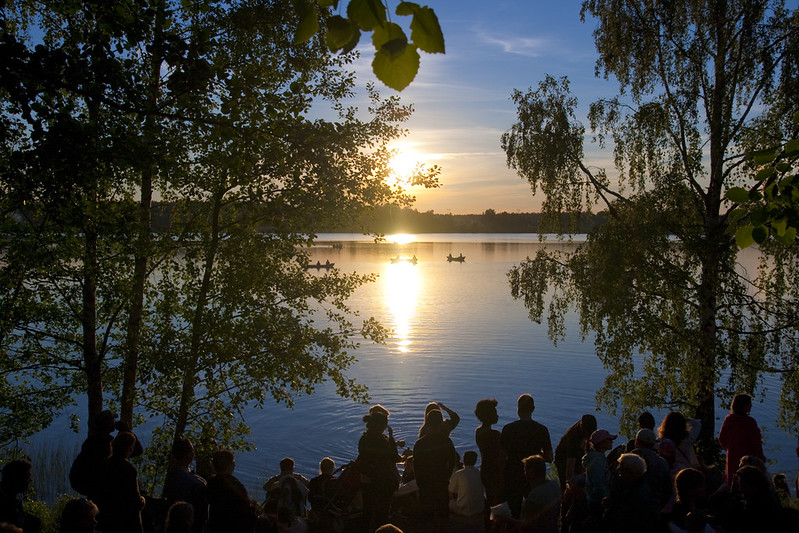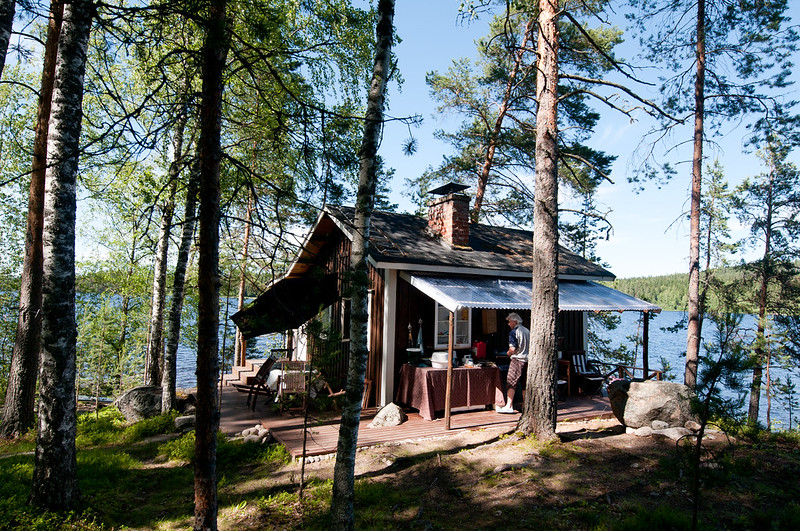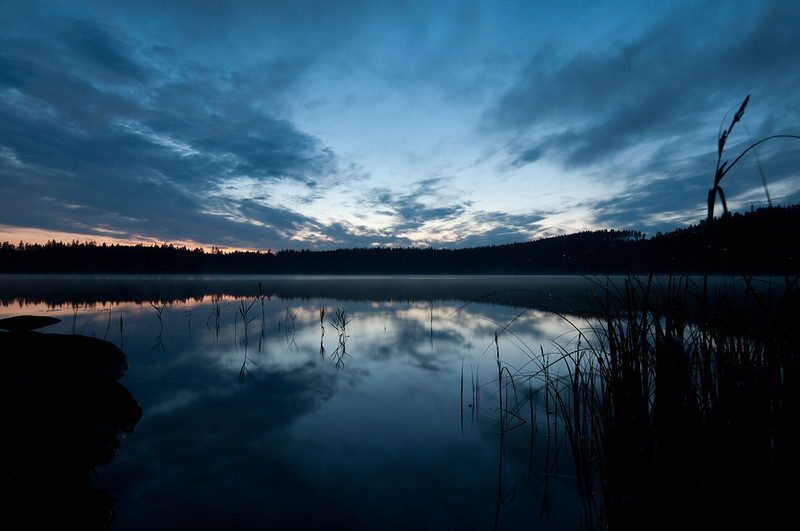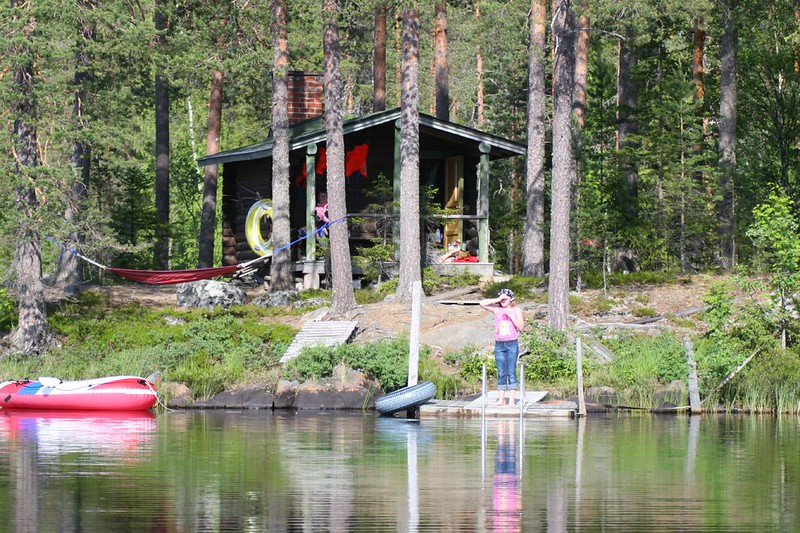Juhannus(Midsummer Festival)
Finland's Enchanting Midsummer Festival
2026/06/19
In late June, all of Finland comes alive with the Midsummer festival known as Juhannus. Held annually on the Saturday between June 20th and 26th, this celebration sees people gathering around bonfires under the bright night sky, enjoying barbecues and saunas with family and friends. At lakeside cottages and town squares, laughter and music fill the air, creating a lively atmosphere where people dance and sing. The bonfire (Kokko) is central to this festival, symbolizing Finland's traditional Midsummer celebration. Participants grill fresh ingredients while enjoying the special night under the midnight sun.
Main Attractions
Kokko: The Midsummer Bonfire
As twilight descends – though it never truly gets dark – the landscape comes alive with the warm glow of Kokko, traditional Midsummer bonfires. These towering pyres, often reaching heights of 10 meters or more, are lit along lakeshores and beaches across Finland. The crackling flames cast dancing shadows on the faces of revelers, while the scent of burning birch and pine mingles with the crisp night air. The Kokko serves not only as a focal point for gatherings but also as a symbolic gesture to ward off evil spirits and ensure good fortune for the coming harvest.
The Magic of the White Nights
The true star of Juhannus is the white night itself. In the northernmost parts of Finland, the sun doesn't set at all, while in the south, it dips just below the horizon, casting an ethereal glow that bathes the landscape in a soft, golden light. This phenomenon creates an almost surreal atmosphere, where time seems to stand still. Many Finns take advantage of these bright nights by engaging in traditional Midsummer activities like midnight swims in crystal-clear lakes or peaceful nature walks through misty forests.
Sauna and Vihta: Cleansing Body and Spirit
No Juhannus celebration is complete without a visit to the sauna. The gentle hiss of water on hot stones fills the air as friends and family gather to cleanse both body and spirit. Many Finns enhance the experience with a vihta or vasta – a bundle of fresh birch branches used to gently whip the skin, releasing a refreshing aroma and improving circulation. After the sauna, it's customary to cool off with a bracing dip in a nearby lake or sea, the contrast between the steamy sauna and the cool water invigorating the senses.
The Midsummer Feast
Juhannus is a time for indulgence, and the Midsummer table groans under the weight of seasonal delicacies. Fresh, buttery new potatoes (uudet perunat) take center stage, their earthy aroma mingling with the smoky scent of grilled fish – often whitefish or salmon. Pickled herring, dill-flecked salads, and hearty meatballs round out the savory offerings. For dessert, plump, sun-ripened strawberries are enjoyed with cream or as part of traditional strawberry cake. All of this is washed down with crisp, locally-brewed beer or perhaps a glass of sima, a homemade mead-like drink that fizzes with the taste of summer.
Cultural and Historical Background
Juhannus has its roots in ancient pagan celebrations of the summer solstice, originally honoring Ukko, the god of weather and harvest. The festival was later Christianized and associated with the birth of John the Baptist, from whom it derives its Finnish name. Despite these religious overlays, Juhannus has retained much of its pagan character, with rituals and beliefs centered around fertility, nature, and the power of Midsummer magic.
For Finns, Juhannus represents more than just a Midsummer party. It symbolizes their deep-rooted cultural traditions and important connection to nature's cycles. After long, dark winters, the festival serves as a collective exhalation, a time to celebrate the brief but intense Finnish summer. It's a period when the usual social boundaries relax, and people come together to honor ancient traditions while creating new memories. Juhannus is a living expression of Finnish culture, connecting past, present, and future.
Participants Voices
While I usually focus on desk work, there's something about Juhannus that calls me back to nature. One year, a group of friends and I rented a mökki (summer cottage) in the Turku archipelago. We were able to escape our usual busy lives. During the day, we gathered wildflowers and birch branches for the sauna, and prepared grilled salmon and new potatoes for dinner. As night fell and the sky turned a deep blue, we lit our Kokko on the shore. The warmth of the fire, the sound of waves, and conversations with friends were so pleasant that we felt a special sense of satisfaction that we can't experience in modern life. This experience reminded me why we Finns feel such a deep connection to these ancient traditions.
I moved to Canada 10 years ago but always return to Finland for Juhannus to spend it with my family. This year too, when I arrived at my parents' home my mother had prepared fresh new potatoes and salted salmon. The smell instantly brings back childhood memories. On Juhannus day we all went to my grandparents' cottage enjoyed sauna then jumped into lake. In evening my father and brother built Kokko watching flames rise is magical every time. The time spent eating grilled sausages catching up with family relatives is special moment for me. While life in Canada is fulfilling during Juhannus I strongly feel connection to Finnish nature culture family bonds. This tradition is part of my identity I want to pass on to my own children someday.
Fun Facts
- In Finnish folklore, Juhannus Eve is considered a powerful time for love spells. One tradition suggests that if a young woman collects seven different wildflowers and places them under her pillow she will dream of her future spouse.
- The world's largest Juhannus Kokko was built in 2016 in Pori western Finland It stood at an impressive height of 47.83 meters (156 feet 11 inches) tall!
- Juhannus is one of few times when Finnish flag is flown all night long symbolizing sun that doesn't set.
- Many Finns believe that louder you celebrate Juhannus better your harvest will be leading to some particularly enthusiastic parties!
- In northernmost parts of Finland sun doesn't set at all for several weeks around summer solstice phenomenon known as "midnight sun".
Festival Dates
Juhannus is celebrated on Saturday falling between June 20 and June 26.
The event schedule is subject to change. Please check the official website for the most up-to-date information.
Information
| Name | Juhannus(Midsummer Festival) |
| Country | Finland |
| Area | Around the country, |
| Date | 2026/06/19 |
| Link |
Upcoming Festivals
Whirling Dervishes Festival Turkey
A Mesmerizing Dance of Divine Love
2025/12/06Mevlana Celaleddin Rumi Commemoration Ceremony ( Şeb-i Arus ) Turkey
A Whirling Journey to Divine Love
2025/12/10Dia de la Virgen de Guadalupe Mexico
A Festival Weaving Faith, Fervor, and Mexican Identity
2025/12/11L'Escalade Switzerland
Geneva’s Grand Winter Festival of Courage, Chocolate, and Community
2025/12/12Umkhosi Wokweshwama South Africa
The Zulu First Fruits Festival—A Sacred Celebration of Land, Ancestors, and Renewal
2025/12/12Lucia Festival (St. Lucia's Day) Sweden
A Festival of Light Illuminating the Nordic Darkness
2025/12/15Las Posadas Mexico
The Luminous Quest for Sacred Shelter
2025/12/22Noche de Rabanos (Night of the Radishes) Mexico
A celebration blending art, farming heritage, and cultural traditions
2025/12/23Chant of the Sybil on Majorca Spain
A Medieval Prophecy Echoes Through Majorcan Christmas
2025/12/23‘Hatajo de Negritos’ and the ‘Hatajo de Pallitas’ Peru
A Christmas Festival of Rhythm, Faith, and Afro-Andean Heritage in Peru’s Ica Region




